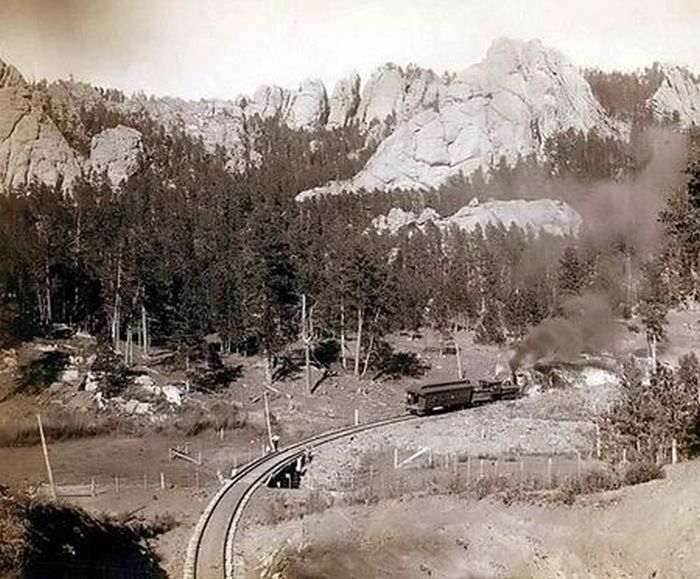History: American Old West, United States
|
• Cowboys
Central to the myth and the reality of the West is the American cowboy. His real life was a hard one and revolved around two annual roundups, spring and fall, the subsequent drives to market, and the time off in the cattle towns spending his hard earned money on food, clothing, gambling, and prostitution. During winter, many cowboys hired themselves out to ranches near the cattle towns, where they repaired and maintained equipment and buildings. On a long drive, there was usually one cowboy for each 250 head of cattle.
Before a drive, a cowboy's duties included riding out on the range and bringing together the scattered cattle. The best cattle would be selected, roped, and branded, and most male cattle were castrated. The cattle also needed to be dehorned and examined and treated for infections. On the long drives, the cowboys had to keep the cattle moving and in line. The cattle had to be watched day and night as they were prone to stampedes and straying. The work days often lasted fourteen hours, with just six hours of sleep. It was grueling, dusty work, with just a few minutes of relaxation before and at the end of a long day. On the trail, drinking, gambling, brawling, and even cursing was often prohibited and fined. It was often monotonous and boring work. Food was barely adequate and consisted mostly of bacon, beans, bread, coffee, dried fruit, and potatoes. On average, cowboys earned $30 to $40 per month. Because of the heavy physical and emotional toll, it was unusual for a cowboy to spend more than seven years on the range. As open range ranching and the long drives gave way to fenced in ranches in the 1880s, the glory days of the cowboy came to an end, and the myths about the "free living" cowboy began to emerge.
Many of the cowboys were veterans of the Civil War, particularly from the Confederacy, who returned to ruined home towns and found no future, so they went west looking for opportunities. Some were Blacks, Hispanics, Native Americans, and even Britons. Nearly all were in their twenties or teens. The earliest cowboys in Texas learned their trade, adapted their clothing, and took their jargon from the Mexican vaqueros or "buckaroos", the heirs of Spanish cattlemen from Andalusia in Spain. Chaps, the heavy protective leather trousers worn by cowboys, got their name from the Spanish "chaparreras", and the lariat, or rope, was derived from "la reata". All the distinct clothing of the cowboy—boots, saddles, hats, pants, chaps, slickers, bandannas, gloves, and collar-less shirts—were practical and adaptable, designed for protection and comfort. The cowboy hat quickly developed the capability, even in the early years, to identify its wearer as someone associated with the West. The most enduring fashion adapted from the cowboy, popular nearly worldwide today, are "blue jeans", originally made by Levi Strauss for miners in 1850. It was the cowboy hat, however, that came to symbolize the American West.
|
|









